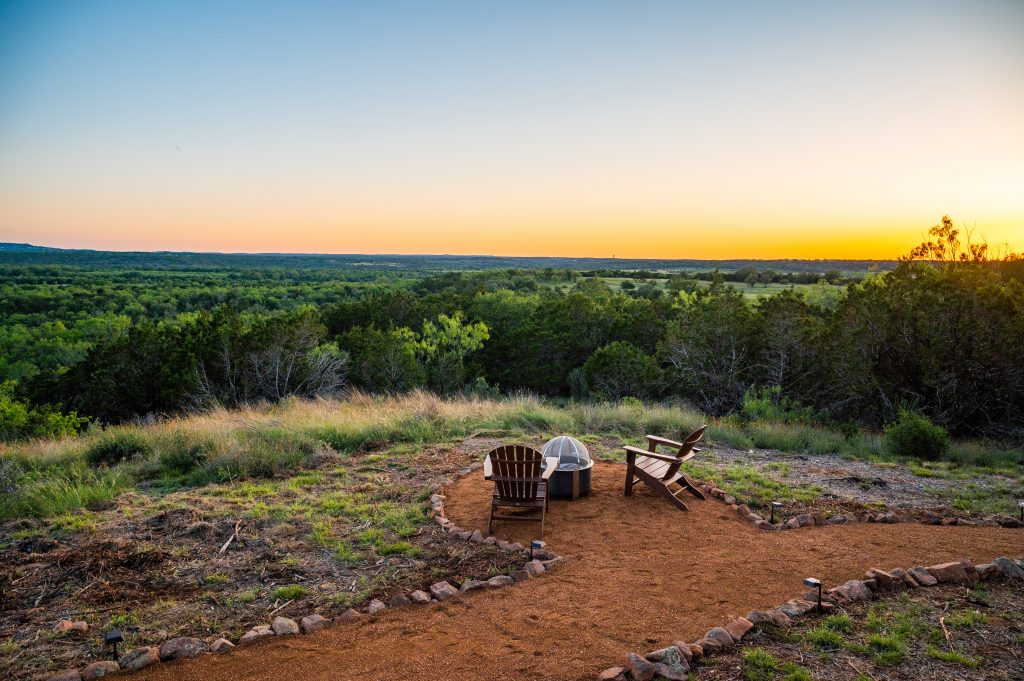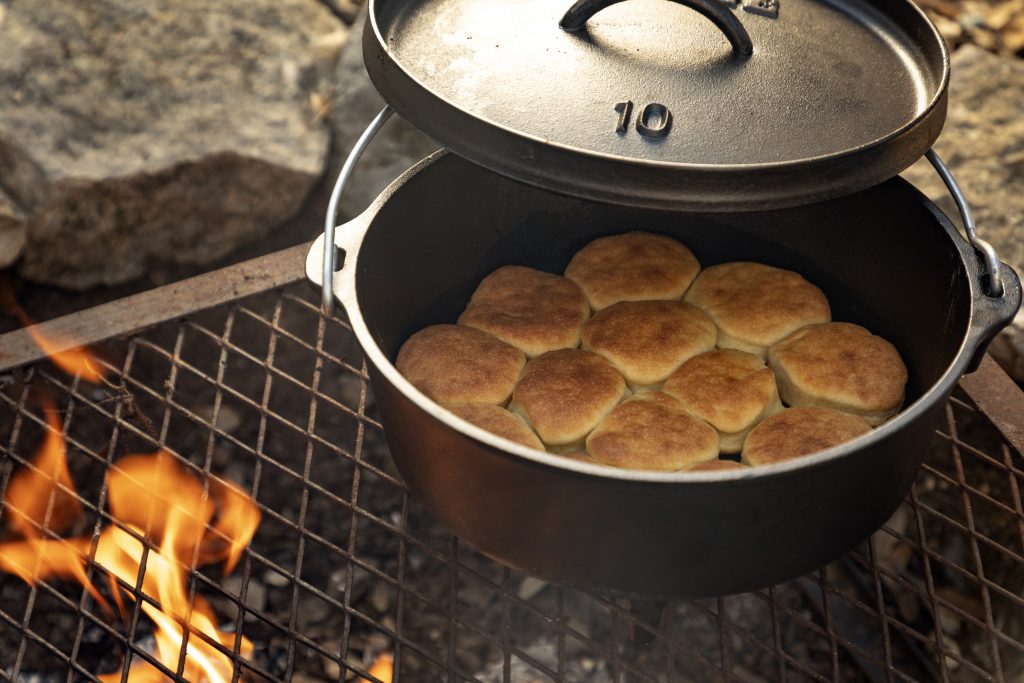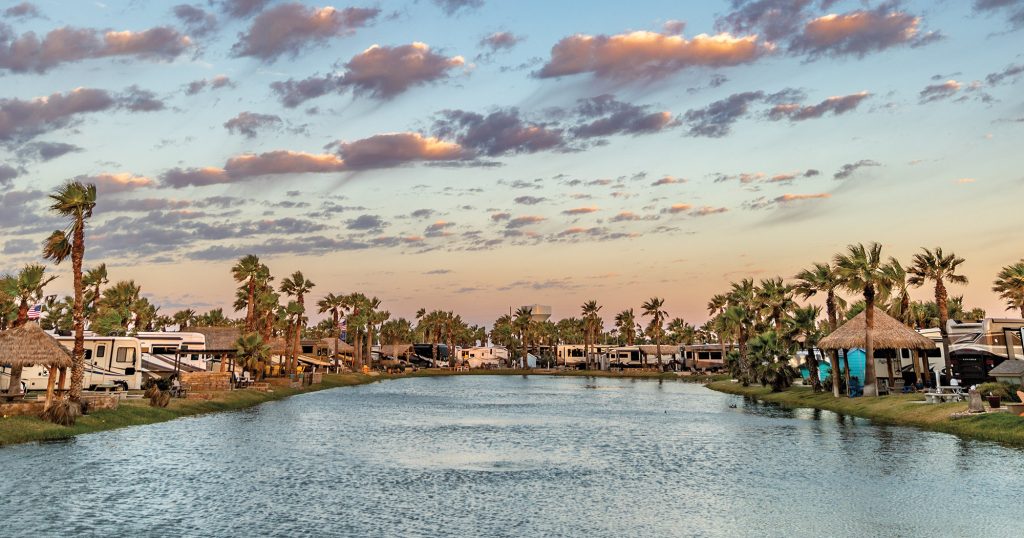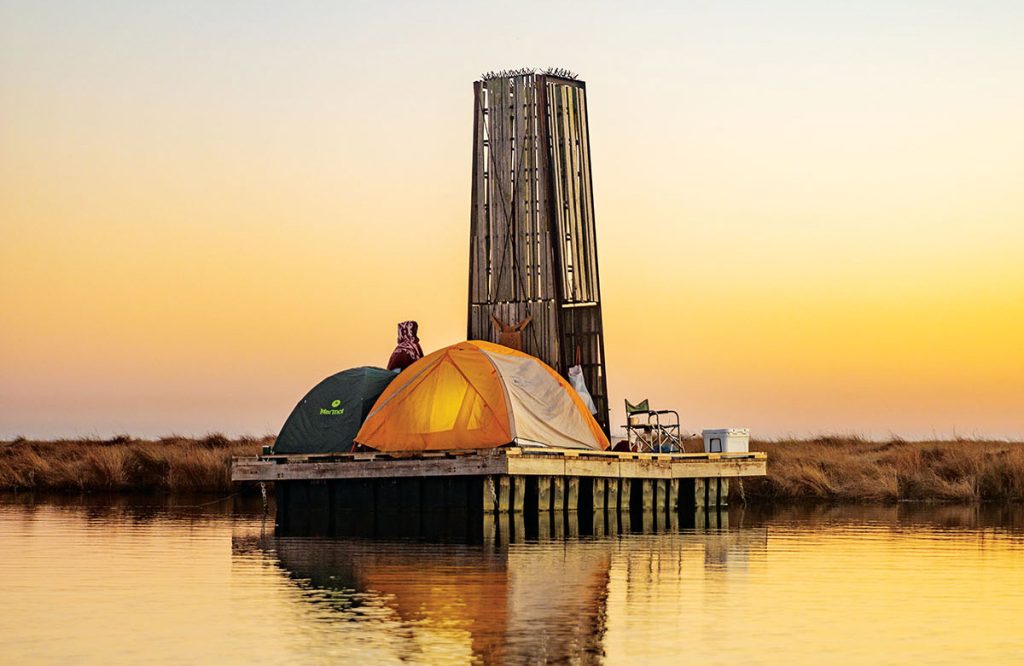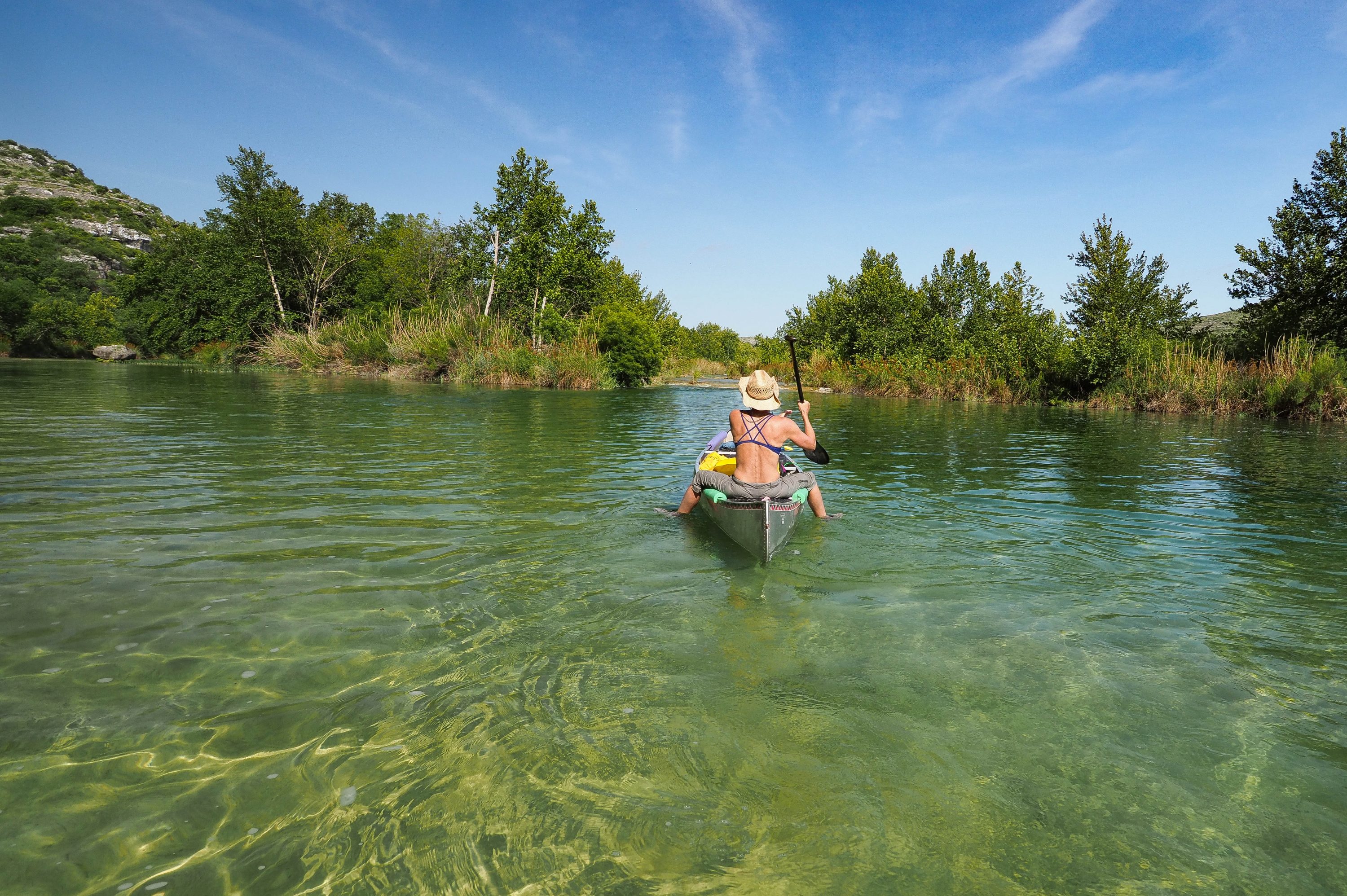
Writer Pam LeBlanc navigates the Devils River in Southwest Texas on a summer canoe camping trip.
Earlier this summer, I strapped my aluminum canoe to the top of a friend’s truck and headed west to the Devils River.
My husband, a good friend, and I spent a blissful four days paddling down that pristine, glinting ribbon of blue-green water in Southwest Texas, camping on islands, cooking fat steaks for dinner, and spending as much time as possible swimming.
Canoe camping is a fine way to vacation anytime, but especially during a pandemic. It’s outdoors, remote, and doesn’t attract crowds. But it does require some planning. Think of canoe camping as backpacking, only on water instead of soil, and with the luxury of being able to carry more gear.
“It’s a relaxing way to enjoy nature while still getting in a little workout,” says Holly Orr, who offers instruction and training through her San Marcos-based company Paddle With Style. Orr has guided trips on the Buffalo River in Arkansas, as well as the Colorado, Guadalupe, and San Marcos rivers in Texas.
Her tips for a good trip? “It’s the famous ‘Prior Proper Planning Prevents Poor Performance,’” she says. “Do your homework. Have a float plan. Know where you’re getting in and getting out, and what to do in an emergency. Make sure your equipment is ready for the task, along with your abilities.”
Depending on the river’s flow, canoe campers can typically cover 10 to 15 miles per day, but why rush? We covered 22 miles in our four days on the Devils River—and it was heaven.
Depending on where you paddle—and Texas is full of options—you may or may not need a permit. On the Devils, you can either get a Devils River Access Permit from Texas Parks and Wildlife, which allows you to pitch a tent at designated paddle camps, or camp on islands as you go. Whatever you do, don’t trespass on private land.
You can also camp on islands along the Colorado River, or you can pitch a tent at one of the Lower Colorado River Authority parks (like Plum Creek Park) along the way.
On the San Marcos River, paddlers can reserve campsites at the San Marcos River Retreat, Shady Grove Campground, Leisure Resort, or Palmetto State Park.
Check the river’s level before you go, and check with local outfitters on whether the conditions are appropriate for paddling. Pack personal flotation devices (required by state law), and make sure you’re skilled enough to handle the river.You’ll need a spare paddle, bowlines for hauling and tying off, and a water purifier to treat water for drinking as you go.
You’ll also need to bring all the camping basics, like a tent, sleeping bag, sleeping pad, headlamp, first aid kit, and a bag for your trash. Pack everything in dry bags, and put the heaviest items in the center and bottom of your boat, with lighter gear at the ends. Use straps or carabiners to secure items in case you flip, and keep snacks, maps, sunscreen, permits, and a water bottle clipped within reach. A satellite communications device like an InReach allows you to contact someone in case of emergency. You can find basic canoe-camping gear at any outdoor stores.
You shouldn’t camp right next to the water in case the river level rises overnight, and you should tie up your canoe so it doesn’t drift away when you sleep.
Before our trip down the Devils River ended, we’d fished, floated, and napped our way down the river, then pinned our boat against a boulder in a particularly daunting set of rapids. (Pro tip: Composite boats slide over the sticky West Texas rock better than aluminum.)
